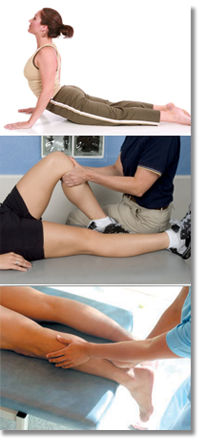There is little evidence that our foot type and biomechanics can be a predictor of injury. However, it could be assumed that, if a person has an abnormal or inefficient running action, at a given mileage, that person would be more vulnerable to injury than someone with a ‘normal’ running action.
‘Over-pronation’ is the foot-type most commonly heard about. This is where the foot tilts in-ward and the individual may appear flat-footed. We are not able to state that every person who over-pronates will suffer injury but we can try to optimise function in an effort to reduce the chance of injury. Every individual runner will have their own threshold of tolerance to the stress of running, regardless of foot-type, and it can take a combination of factors to ‘tip’ that person over the threshold of injury.
The knee, ankle and hip provide both shock absorption and propulsion during running. The running cycle consists of three phases:
Stance phase, swing phase & float phase
The forces are applied through the body during the stance phase, therefore this is when there is the greatest risk of injury.

